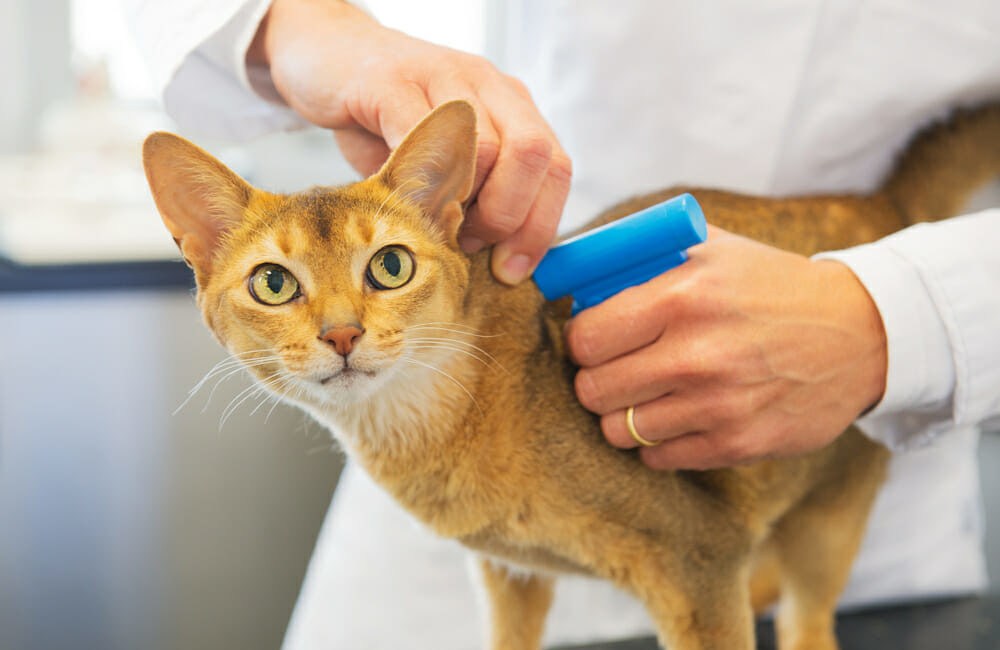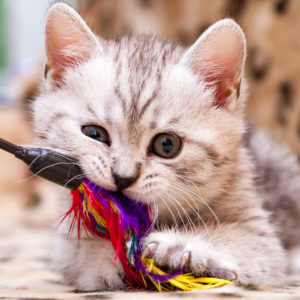A microchip is a small chip that is placed under the skin between the shoulders. The needle we use is larger than a typical blood collection needle, though other than the initial poke does not cause any ongoing pain.
Each microchip has a unique number that is retrievable with a special scanner that all veterinary clinics and rescue associations have. When a found cat is brought to a clinic or rescue facility, it is checked for a microchip by running the scanner over the body. The number populates off the scanner which can then be put into a search system which will tell us which company it is registered with. There are many different microchip companies out there, so it is important to know which one your cat has so you can keep your contact information up to date.
We can then call the company linked to the chip, who can then give us the contact information that you provided when it was registered so we can get in contact with you! The companies are instructed to only provide your contact information to an animal professional or to the owner. Microchips are NOT tracking devices; they need to be scanned in order for your furry family member to get home to you. There is a small fee to get your cat microchipped but no monthly cost afterwards. However, some microchip companies do charge a small fee to update addresses and other contact information.
What is the difference between a microchip and tattoo? Tattoos are slowly becoming a less common form of identification. Tattoo quality can decrease over time due to aging, quality of the tattoo to start, and other environmental changes that can affect the skin of the ear. What this means is that a well-done tattoo 10 years later can be difficult to read due to the blurring of the letters and numbers over time. This change can make it nearly impossible sometimes to identify the collection of digits which is a big problem since that combination is unique to a clinic and cat! A microchip does not age over time but in rare instances can travel from the shoulders, which is why we scan the entire cat for a chip before determining that they do not have one. Additionally, tattoo information is often kept on paper, while microchips are all digital.
It is very important to microchip your cat! We often get comments about how indoor only cats do not require them and if anything, it’s actually the opposite! Indoor cats accidentally getting out are where most of our phone calls about missing cats come from. This is because they’re not supposed to be outside and are likely not equipped to hunt and fend for themselves. So, when a neighbour sees an unfamiliar neighbourhood cat and takes it to a clinic to have scanned, it now has no form of identification to get home to you and is taken to the city in the hopes of an owner coming forward and claiming them.




